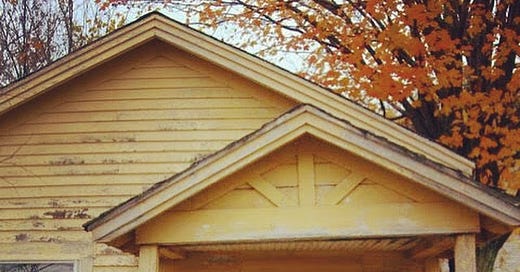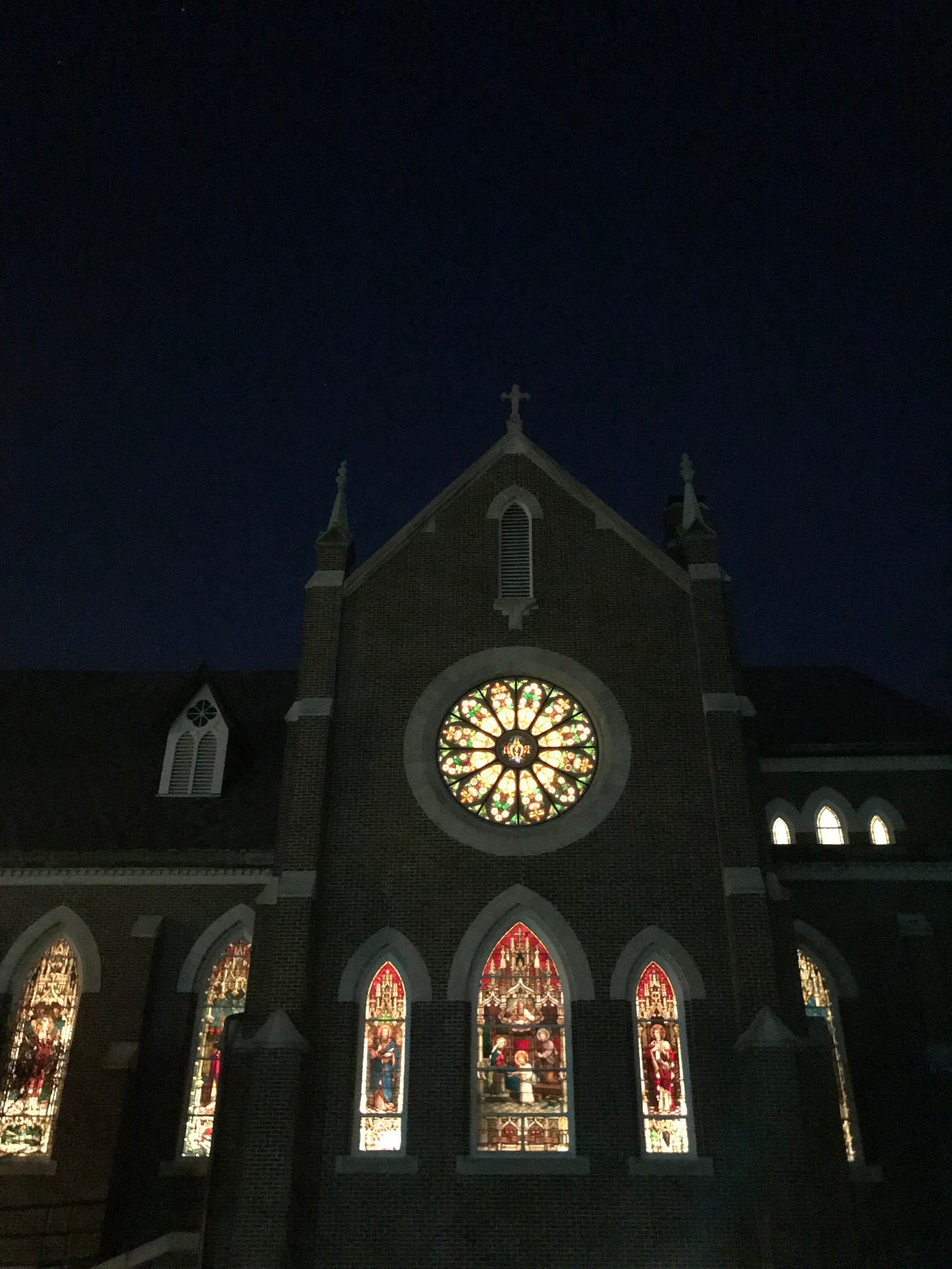Americans pride themselves on being lone wolves, independent pull-yourself-up-by-your-bootstraps types. But most of us don’t even know what a bootstrap is anymore, so maybe it’s time to call it quits on this fabled American archetype.
Where does this rugged individualism come from in the United States? Many cultural historians would claim that it comes from the early days of the country, when “pioneers,” or “colonists,” as they were known, had to live hardscrabble, completely self-supporting lives, enemies both real and perceived all around them, from the local “Indians” to the rocky and heavily forested lands to the long, cold winters. These early settlers, with no one to rely on but themselves, chose to take a individualist approach, figuring if they didn’t, they’d probably get themselves and their families killed, either by the cold, by the natives, or by some preventable disease.
There was also, from the very early days of the American experiment, an “us versus them” mentality, whether it was derived from breaking free of British control or fighting the natives for land and power. This mentality tends to create an individualistic society rather than a socialist one because there’s always an obvious enemy to not share with and to counter your own society’s cultural norms and biases. Individualist societies tend to reward individual success stories — the billionnare, the famous dot-commer, the award winning actor. But this system tends to make most people feel left out and underperforming. How can most people ever measure up to Steve Jobs or Meryl Streep?
America is designed as a lonely place. It wasn’t always, but it is now. Neighborhoods are planned mostly without public space. The only place you can see other humans is in a privately owned space — a shopping mall for example, a grocery store, a bowling alley, or a gym. Each of these places requires their inhabitants to spend money to be there. I suppose you could get away with whiling a day away in a supermarket or bowling alley without paying, but you’d likely be viewed as a weirdo who hangs out in the grocery store all day. There are a few public spaces — libraries, community centers — but these are few and far between and, from personal experience, they tend to fill with people who don’t have houses of their own, and people with various untreated mental illnesses, which often leads to a stressful environment. Because of this, most Americans don’t use their public libraries, and other public institutions like museums and swimming pools now charge hefty fees for entrance.
Europe has perfected public space, mainly because the public spaces here were designed and built before the age of the automobile and the Internet. Not only are there many parks and plazas with shaded seating areas, there are private cafés where you can spend very little money and spend half a day sitting in a pleasant location. You can spend about two euros ($2.36) on a coffee or two, or a beer or two, and be provided with a couple of small snacks for free, and no server is ever going to ask you to leave, unless you start acting weird. Even then, they’re likely to just ignore you unless you’re scaring away other customers. Places that look like European cafés in New York City, for example, rush in and out diners as fast as they possibly can so they can earn more profit per table, and the servers are also incentivized to do this so they can earn more tips. This dog-eat-dog scenario takes the chill — the café lifestyle — from the café, removing these spaces’ original functions. This tension pollutes the café with purely capitalist motivations, discouraging hanging out, which in turn, leads to lack of connection with other people, and loneliness.
A recent editorial in the New York Times by Michelle Goldberg — entitled “Loneliness Is Breaking America” — points out that most of the hardcore Trump supporters, the ones that follow his campaign stops like they’re the Greatful Dead or Phish, are very disconnected and lonely people, either with no families or families that have forsaken them, no children or adult children that live far away, and very few, if any, friends. They have turned to the Trump campaign’s endless series of events for a sense of community that they haven’t found elsewhere — not in a hobby or sport, not in neighbors or friends, and not in children or family. Goldberg hypothesizes that this may be why these supporters are so incredibly loyal.
Loneliness flourishes in places where people are disconnected. This helps explain why the U.S. has such a severe drug epidemic. Drug addiction is the opposite of connection in every way. You take opiates to leave society, to refuse its calls, to create your own bubble. But opiates aren’t the only problem. Much of the addiction in the country is to benzodiazepines, the drug class that includes the tranquilizers Valium, Xanax, and Klonopin. These drugs are being used and abused by teenagers and adults alike in numbers never before witnessed, in communities of all socioeconomic backgrounds, cultures and races. A 2018 NIH study on use of benzos determined that 12.5% of Americans take some form of these drugs. These aren’t the kinds of drugs people take to celebrate life. They’re taken to dull one’s experience, to tamp down feelings of discontent and sadness, and the panic attacks that often are a symptom of this larger dysfunction. And of course if you’re home on Xanax, you’re not going to reach out to family, friends or your community for connection.
Families in Spain — where I am living right now — live together in multigenerational houses. This doesn’t only happen in Spain of course, but it’s common here, and not looked down upon by anyone. In the house next door to the one I’m currently living in in Olvera — a small town on a mountain amongst arid olive groves — there are at least three generations living together in a house that is the same size as mine. There is the matriarch, a kind woman who wears brightly colored house dresses and accompanies her granddaughters to the park down the block in the cool of the evening. There is her son, who looks to be about 35, and there is his son, probably around 15. Unstated but fairly easy to assume is that the matriarch probably lost her husband at some point, and the other two — their father and grandfather. And there’s no wife and mother around to speak of, so she must have left or died at some point. In other words, sad things have happened to these people. They certainly are not rich. The son keeps songbirds on the roof, moving them inside for the heat of the day and putting them outside in the evening. I think what these people have nailed is tackling struggle and sadness together as a family. When you do this, it seems easier to overcome. If the matriarch had lost her husband while living alone — with her children living far away from their childhood village — she would probably be much sadder. But she has her son and grandson and granddaughter and neighbors and sisters down the street to keep her life full and vibrant. She never has to be alone if she doesn’t want to be, and she has evidence of the legacy of her husband all around her — in the family he co-created with her. This must be pretty life affirming.
You can’t talk about loneliness in America without bringing up America’s most well known contributions to the contemporary world: the Internet, social media and the smart phone. These three advances, if you want to call them that, have contributed more to loneliness than perhaps any other cultural phenomenon we’ve ever known. In a recent poll by Cigna Insurance, 46% of social media users admitted to feelings of loneliness for at least part of the time ranging all the way up to all the time. The similar study from 2017 by the American Journal of Preventive Medicine found that young adults with heavy use of social media platforms — two hours a day — have twice the chance of experiencing social anxiety and feelings of being lonely. It seems that we’ve created the perfect system for creating loneliness, and ironically we call it “social.” It’s almost a cruel joke.
Walk into to any bar or café in the United States today and beyond the affects of the pandemic, you’ll notice something else: few people are just talking. Many stare at their phones, scrolling through Instagram or checking emails. Eye contact is rare. Human connection, it seems, is suffering and anemic under the alluring and appealing effect of the mighty smart phone, a device engineered and designed to hold our attention as long as possible. Alerts pop up on the screen, always keeping its users on the line, waiting for what might happen next, from likes to texts to news alerts. Loneliness, of course, roots from this lack of connection. Siri isn’t real and she certainly isn’t our friend.
Jeremy Nobel, MD, MPH writes in the Harvard Health Blog: “Asking if social media makes you lonely and depressed is a little like asking if eating makes you fat. The answer is yes, absolutely.” Nobel goes to to suggest that snack sized portions are key for healthy social media use, but does it seem like your friends are following this advice?
With three out of five Americans reporting feeling lonely, this may be the epidemic that supersedes all others. Lonely people are more likely to abuse drugs, commit suicide, eat badly and not take good care of themselves. They’re also less likely to hold a job and contribute positively to their community, according to Cynthia Coons at Bloomberg. Perhaps Americans should be focusing less on the symptoms of loneliness and depression — drug abuse, diabetes, weight issues, suicide and unemployment — and more on the root problem: we’re lonely as hell. The only solution is to reconnect to each other, not through screens and apps, but in person.







